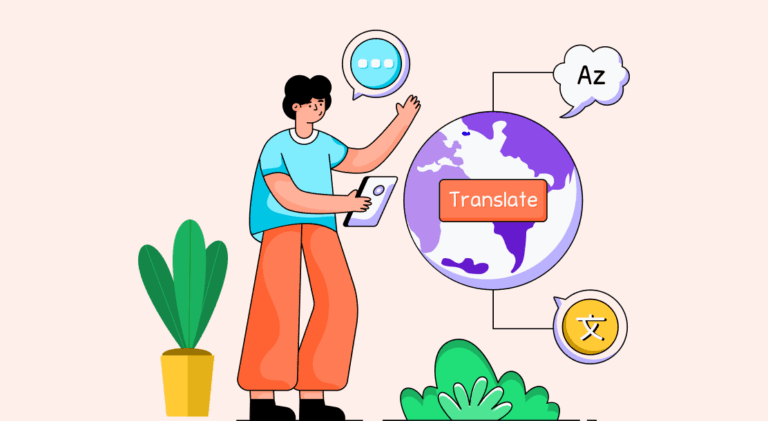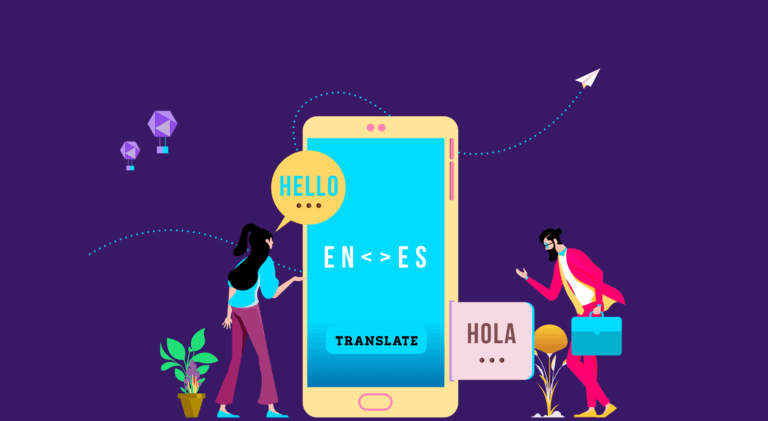Subtitling or Dubbing: What’s Best for Film Translation?

Globalization has made a variety of video content accessible. Some merchants wish to reach a wider audience by subtitling or dubbing the video or film, while others are content with an English-only edition.
And they are implemented differently. In subtitles, the conversation is printed over the movie and translated into the audience’s native tongue. On the other hand, dubbing involves substituting one spoken language with another, frequently using different voice actors.

Finding the superior approach is not simple. Each is better based on the objective and the preferred approach every country or area demands.
In this article, we explore the difference between subtitling and dubbing and their pros and cons to determine which works the best for film translation.
Subtitling Vs Dubbing: Pros and Cons

Subtitles
Subtitles are text that appears on the screen, typically at the bottom, which transposes the spoken audio of the show or film. Except for situations where they are crucial to the plot, they rarely describe music or sound effects.
People with trouble hearing frequently utilize subtitles to ensure they don’t miss the dialogue. However, subtitles can also be used in other situations, such as when there is a problem with the audio mixing in the video or when a character has a hard-to-understand accent.
Pros of subtitles
- Subtitles are the best option if you want to see the film or television program in its original, unaltered form. It implies that you can hear the original voices and discern the complexity and tone that the performers and director intended.
- Subtitles are excellent for accessibility. A dub is useless if you have hearing loss; with subtitles, you can watch media without problems.

- For those studying a foreign language, subtitles might be helpful. The subtitles and the original dialogue can both be heard at the same time. Your mind will begin connecting the words even subconsciously.
- They frequently adhere more closely to the original screenplay. Scripts are commonly changed in dubs to make the audio and mouth motions coincide. You get to experience something largely unfiltered when there are subtitles.
- Turnarounds are quicker when using subtitles because there is no need for recording or editing. If you choose to subtitle over dubbing, your video material will reach its intended audience more quickly.
Cons of subtitles
- Subtitles do have certain drawbacks, though. The main reason is that they can be distracting; you can find yourself staring at the bottom of the screen and missing the action.
- After all that reading, you can feel as though you aren’t engrossed in the film or television program. It’s possible to hear the emotion in the language, but it’s also possible to overlook subtleties in acting or visual storytelling.

- Subtitles can sometimes be challenging to understand if you read slowly or are a young person. Also, you need to constantly look at the screen to follow subtitles. You can’t just glance away without missing some of the conversations.
Dubbing
During the post-production process of a film or television program, the original spoken dialogue is replaced with new dialogue, typically in a different language. This is dubbing. Sound engineers can swap the dialogue while keeping the other audio because the dialogue is almost typically recorded in its own audio track.
Pros of dubbing
- Animation, where there is little difference between spoken words and lip movements, can benefit the most from dubbing. In live-action dubbing, it may be more challenging to separate from this.

- Since you hear your own language instead of adapting to another, dubs can also help with familiarity. It can assist you in losing yourself in what you’re watching very quickly.

Cons of dubbing
- Dubs are frequently generated without the original creators’ input. This means you might not get a genuine experience because the voice actors doing the dubbing might not match the intended tone and style.
- Voice acting requires special abilities. Regardless of how well everything else is done, a lousy voice actor or awful direction can completely spoil what you’re watching and pull you out of the present.
- It can be irritating to relate the same voice to several characters if you watch a lot of dubbed content and notice the same voice often. This is frequently excused in animation, where the use of heightened voices is advantageous, but it is more difficult in live action.
- Because what you hear and what the performers are saying do not correspond, dubs can also be bothersome. To avoid this, the script is typically altered to reflect what is seen on screen more closely; nevertheless, this has the drawback of resulting in a filtered rendition of the original. It might completely alter the meaning of certain scenes.
- Plus, between subtitling or dubbing, the latter requires the cost of translation; dubbing needs a studio, editors, and post-edit professionals, as well as professional voice actors (one for each actor in the original version of the video content). On the other hand subtitling takes less work and hence lesser cost.
It’s All About Your Audience
You should keep your audience in mind when deciding on the best strategy for translating videos. Even if a certain demographic prefers one approach over the other, do more research before making your choice.
For instance, many people in Latin America appear to favor dubbing. However, if you look closely, you’ll notice that the preference for subtitles increases as a population’s socioeconomic status does.
Therefore, you might still translate the content of your video using subtitles if you’re looking for an informed audience. Dubbing can be your only option if you’re going for mass appeal. You can try both and decide which you like best.
A Quick Summary
In every form of communication, language is crucial. Be it art or daily life. When it comes to subtitling or dubbing, its all about what your does justice to your video and audience.
Viewers can hear real voices and hear how people actually speak when subtitles are used.
On the other hand, dubbing offers the viewers a different version of the same video. Despite the non-verbal communication being lost, the message may still be understood. It completely depends on the nature of your project and your audience’s preferences.
Key Takeaways
- In subtitles, the conversation is printed over the movie and translated into the audience’s native tongue.
- Dubbing is the process of substituting one spoken language with another, frequently using different voice actors.
- Subtitles are the best option if you want to see the film or television program in its original, unaltered form.
- Animation, where there is little difference between spoken words and lip movements, can benefit the most from dubbing.
Latest Blogs
Explore the best healthcare SEO services for your medical practice. Improve online visibility and effectively reach more patients in need of your services.
Discover top social media agencies specializing in banking solutions, enhancing financial services and driving engagement.
Explore top B2B content marketing agencies of 2024. Engage decision-makers with impactful, high-quality content strategies.
Get your hands on the latest news!
Similar Posts

Translation
5 mins read
All You Need to Know About Language Translation and Terminology Management

Translation
5 mins read
6 Reasons to Translate Content into German

Translation
5 mins read